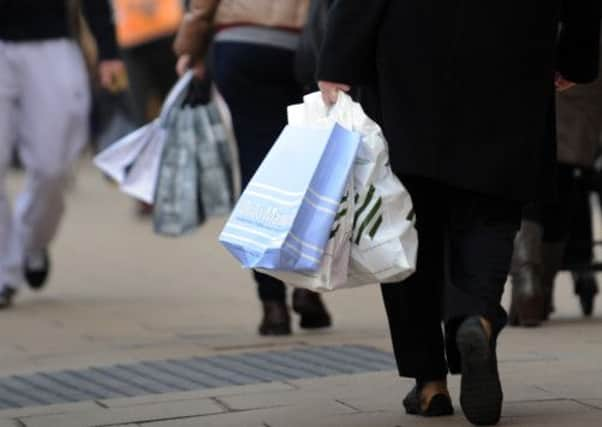Shopper numbers down despite summer sales growth


The number of shoppers for July was 1.3% lower than a year ago and dropped from the 1.2% rise recorded in June 2013.
According to the study by Springboard and the Scottish Retail Consortium (SRC), the figures for Scotland are below the average for the UK as a whole, where shopper numbers rose by 0.8% compared with last year.
Advertisement
Hide AdAdvertisement
Hide AdThe UK figure shows a 2.3% rise in the number of High Street shoppers and an equal decline at shopping centres while there was a 0.9% increase in out-of-town shoppers.
Regionally, Northern Ireland and Wales also achieved growth with the numbers of shoppers 3% and 0.8% higher (respectively) than in 2012.
Scotland has recorded the third biggest drop in footfall across the UK regions, behind the East Midlands (-2.8%) and East England (-2.3%), for July compared with the same month last year.
Spending
However, for the quarter, from May to July 2013, the number of shoppers in Scotland is up by 1%, the second highest figure for that period after Greater London with a 3.2% increase.
There has also been a slight increase in the number of vacant retail units in Scotland from 10% in April to 10.1% in July.
This figure is better than the UK as a whole which has an 11.1% vacancy rate.
Fiona Moriarty, director of the SRC, said: “A slight fall in Scottish shopper numbers doesn’t initially chime with the record-breaking July sales growth we saw last week.
“However, a lot of the products that sold well were summer foods, fashion and outdoor living items: seasonal items for which a lot of us plan shopping trips rather than buying on a whim. Equally, lots of summer spending took place in the Highlands and Islands and coastal areas rather than town centres.
Advertisement
Hide AdAdvertisement
Hide Ad“The Scottish vacancy rate is broadly in line with the previous quarter and below the UK average, but the fact that over one in ten town centre units is standing empty remains a real cause for concern.
Improvement
“July rounded off a strong quarter for sales growth, strengthening the sense of cautious optimism, but if the Scottish Government wants to support long-lasting recovery it should reduce the cost of doing business in our town centres.”
Diane Wehrle, retail Insights director at Springboard, said the figures for the UK indicated a long term improvement for footfall. She said: “Not only has footfall increased annually for the second month in a row, but the improvement in performance accelerated over the quarter, moving from a decline of -0.7 per cent in May to an increase of 0.1 per cent in June and 0.8 per cent in July.
“Whilst the recent hot weather undoubtedly supported activity in high streets in July with an increase of 2.3 per cent, the 1.0 per cent uplift in footfall over the quarter is likely to have contributed to a drop in the vacancy rate from 11.9 per cent in April to 11.1 per cent in July.
“It seems that occupiers are starting to return to the high street, suggesting a greater degree of optimism over future trading prospects and lending further support to the proposition the performance of retail locations is stabilising.
“Of slight concern is that the increase in footfall is not occurring across all location types, but is concentrated in external environments, high streets and retail parks.
“Shopping centres recorded a significant decline in footfall of -2.4 per cent over the quarter with a rate of decline that has increased from month to month, suggesting that covered malls are becoming less attractive retail destinations to shoppers.”